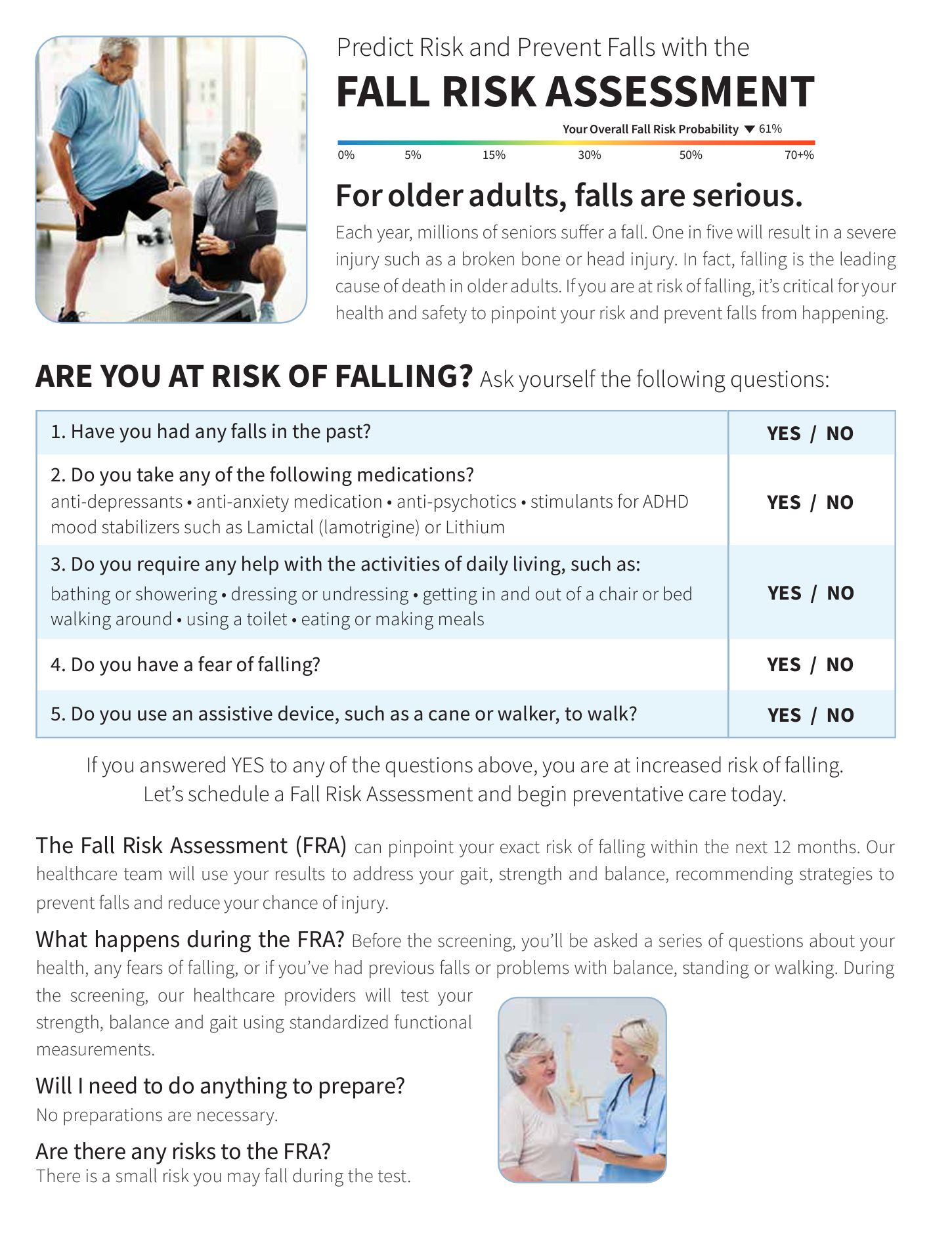Not known Incorrect Statements About Dementia Fall Risk
Table of ContentsHow Dementia Fall Risk can Save You Time, Stress, and Money.The smart Trick of Dementia Fall Risk That Nobody is Talking AboutAn Unbiased View of Dementia Fall RiskDementia Fall Risk Fundamentals Explained
An autumn danger evaluation checks to see just how most likely it is that you will drop. The analysis normally includes: This consists of a collection of concerns regarding your total wellness and if you have actually had previous falls or issues with equilibrium, standing, and/or walking.STEADI consists of screening, analyzing, and intervention. Interventions are recommendations that may minimize your threat of falling. STEADI consists of three steps: you for your danger of succumbing to your risk factors that can be enhanced to attempt to avoid drops (for instance, balance issues, impaired vision) to lower your threat of dropping by making use of efficient methods (as an example, offering education and learning and sources), you may be asked numerous questions including: Have you fallen in the past year? Do you really feel unsteady when standing or walking? Are you fretted about falling?, your provider will certainly check your strength, balance, and gait, using the adhering to autumn evaluation tools: This examination checks your gait.
If it takes you 12 seconds or even more, it may imply you are at higher danger for an autumn. This test checks toughness and balance.
Relocate one foot halfway forward, so the instep is touching the large toe of your various other foot. Move one foot fully in front of the other, so the toes are touching the heel of your other foot.
The Only Guide to Dementia Fall Risk
The majority of drops happen as a result of multiple contributing variables; therefore, managing the danger of falling starts with recognizing the elements that add to fall threat - Dementia Fall Risk. Some of one of the most pertinent risk elements consist of: Background of prior fallsChronic medical conditionsAcute illnessImpaired stride and balance, lower extremity weaknessCognitive impairmentChanges in visionCertain risky drugs and polypharmacyEnvironmental variables can additionally increase the risk for falls, including: Poor lightingUneven or damaged flooringWet or slippery floorsMissing or harmed hand rails and grab barsDamaged or improperly equipped equipment, such as beds, wheelchairs, or walkersImproper use of assistive devicesInadequate supervision of individuals staying in the NF, consisting of those who show hostile behaviorsA successful loss danger management program needs an extensive professional analysis, with input from all members of the interdisciplinary team

The care strategy ought to additionally include interventions that are system-based, such as those that promote a secure setting (ideal illumination, hand rails, grab bars, and so on). The efficiency of the treatments need to be evaluated periodically, and the care strategy changed as essential to mirror adjustments in the fall threat analysis. Applying a loss danger administration system using evidence-based finest method can reduce the prevalence of drops in the NF, while restricting the possibility for fall-related injuries.
Dementia Fall Risk Fundamentals Explained
The AGS/BGS guideline recommends evaluating all grownups matured 65 years and older for autumn danger yearly. This screening includes asking people whether they go to this site have actually fallen 2 or more times in the previous year or sought medical attention for an autumn, or, if they have not dropped, whether they really feel unstable when strolling.
Individuals that have actually dropped once without injury needs to have their equilibrium and gait assessed; those with gait or equilibrium problems need to get added assessment. A background of 1 fall without injury and without stride or balance problems does not call for further assessment past continued yearly loss risk screening. Dementia Fall Risk. A fall threat analysis is needed as part of the Welcome to Medicare evaluation

4 Easy Facts About Dementia Fall Risk Described
Documenting a drops history is one of the high quality signs for loss prevention and management. Psychoactive medicines in certain are independent predictors of falls.
Postural hypotension can commonly be minimized by lowering the dosage of blood pressurelowering medicines and/or stopping medications that have orthostatic hypotension as an adverse effects. Usage of above-the-knee assistance tube and copulating the head of the bed elevated might additionally decrease postural reductions in blood stress. The recommended elements of a fall-focused physical exam are received Box 1.
.png)
A TUG time more than or equivalent to 12 secs recommends high autumn threat. The 30-Second Chair Stand click this link test evaluates reduced extremity stamina and equilibrium. Being not able to stand up from a chair of knee height without making use of one's arms suggests raised loss risk. The 4-Stage Balance examination assesses static equilibrium by having the individual stand in 4 settings, each considerably a lot more tough.